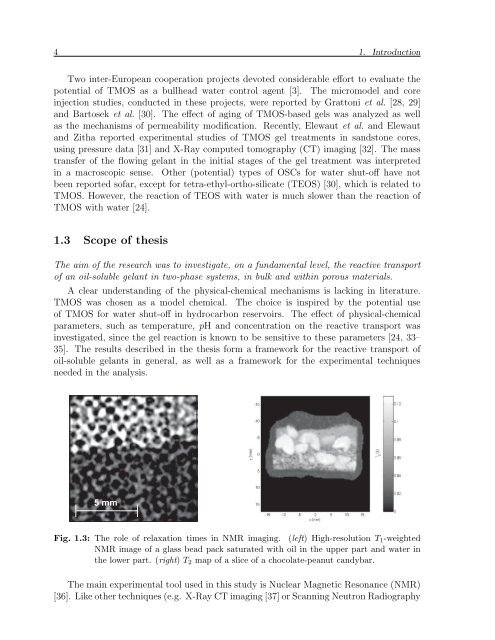Untitled - Technische Universiteit Eindhoven
Untitled - Technische Universiteit Eindhoven
Untitled - Technische Universiteit Eindhoven
- No tags were found...
You also want an ePaper? Increase the reach of your titles
YUMPU automatically turns print PDFs into web optimized ePapers that Google loves.
4 1. IntroductionTwo inter-European cooperation projects devoted considerable effort to evaluate thepotential of TMOS as a bullhead water control agent [3]. The micromodel and coreinjection studies, conducted in these projects, were reported by Grattoni et al. [28, 29]and Bartosek et al. [30]. The effect of aging of TMOS-based gels was analyzed as wellas the mechanisms of permeability modification. Recently, Elewaut et al. and Elewautand Zitha reported experimental studies of TMOS gel treatments in sandstone cores,using pressure data [31] and X-Ray computed tomography (CT) imaging [32]. The masstransfer of the flowing gelant in the initial stages of the gel treatment was interpretedin a macroscopic sense. Other (potential) types of OSCs for water shut-off have notbeen reported sofar, except for tetra-ethyl-ortho-silicate (TEOS) [30], which is related toTMOS. However, the reaction of TEOS with water is much slower than the reaction ofTMOS with water [24].1.3 Scope of thesisThe aim of the research was to investigate, on a fundamental level, the reactive transportof an oil-soluble gelant in two-phase systems, in bulk and within porous materials.A clear understanding of the physical-chemical mechanisms is lacking in literature.TMOS was chosen as a model chemical. The choice is inspired by the potential useof TMOS for water shut-off in hydrocarbon reservoirs. The effect of physical-chemicalparameters, such as temperature, pH and concentration on the reactive transport wasinvestigated, since the gel reaction is known to be sensitive to these parameters [24, 33–35]. The results described in the thesis form a framework for the reactive transport ofoil-soluble gelants in general, as well as a framework for the experimental techniquesneeded in the analysis.# Fig. 1.3: The role of relaxation times in NMR imaging. (left) High-resolution T 1 -weightedNMR image of a glass bead pack saturated with oil in the upper part and water inthe lower part. (right) T 2 map of a slice of a chocolate-peanut candybar.The main experimental tool used in this study is Nuclear Magnetic Resonance (NMR)[36]. Like other techniques (e.g. X-Ray CT imaging [37] or Scanning Neutron Radiography
















